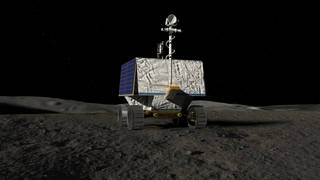
The VIPER team has long understood just how critical its decision about where to land on the Moon would be. We, of course, chose a landing region that will best answer the fundamental science questions asked by the mission, but there are a number of constraints that also needed to be folded into this decision.
- How are the lighting conditions in this region? Remember, VIPER is a solar-powered mission, so access to sunlight is the “fuel” that powers the VIPER rover. We know in the Moon’s polar regions the Sun is very low on the horizon and shadows from local topography are very long. So, while the rover does not need to be in continuous sun, we don’t want to find ourselves trapped in shadowed regions for too long.
- Is the rover in view of the Earth? VIPER is operated in a “direct-to-Earth” fashion, meaning the rover moves on the lunar surface under the direct control of mission controllers on Earth. If the Earth is not in view of the rover, our communications cannot reach it and it cannot be commanded. So, it is important that the chosen lunar region not be tucked behind hills where the rover will be out of sight.
- How navigable is the local terrain? As with any rover mission, the terrain and local topography need to be traversable by the rover. The rover’s capabilities are determined by the time and resources available during rover development, resulting in a specific set of capabilities and constraints – just like you’d see when buying a car. This means you cannot plan to send the rover where the slopes are too steep, or rock obstacles are challenging to avoid.
- Does the region provide ample opportunity to conduct the needed science? The VIPER team has established four main types of soil environments it needs to visit, called ice stability regions. Visiting multiple instances of each of these regions enables the science team to get a good, statistical understanding of the nature of lunar polar volatiles.
The VIPER team has chosen a region near the Nobile Crater at the Moon’s South Pole. This region is a good match for all the features above and will make robust science possible. Additionally, this region offers the time to replan as the mission unfolds, through the measurements that reveal themselves along the way, making the mission more flexible.
Now that we have our exploration region selected, we move to the task of optimizing the rover traverse possibilities, to make the VIPER mission as capable as it can be!
– Dan Andrews, VIPER Project Manager


























